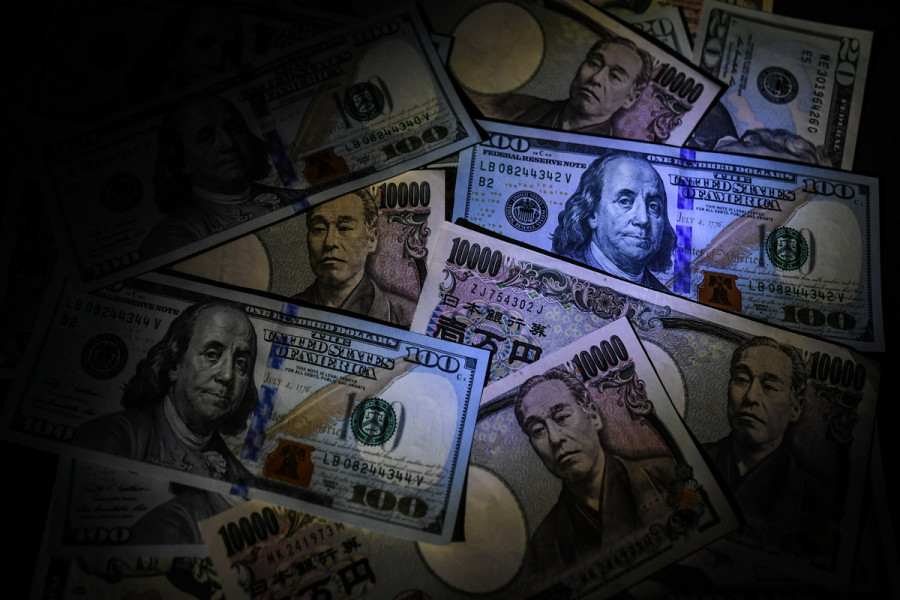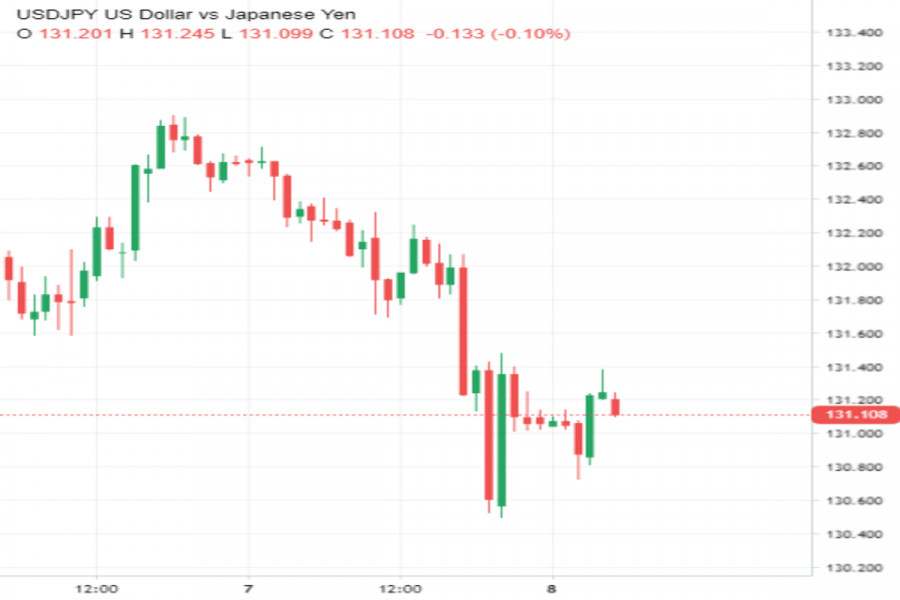

Yesterday, dollar bulls were waiting for a hawkish wave from Federal Reserve Chairman Jerome Powell, but instead caught a dovish deja vu: the official spoke again about disinflation. This sent the greenback into a knockout on all fronts.
Dollar under dovish pressureThe U.S. currency interrupted its spectacular 2-day rally on Tuesday, which was started by strong U.S. jobs data released at the end of last week.
The January jobs report from the Bureau of Labor Statistics showed total nonfarm payrolls rose by 517,000, well above economists' preliminary estimates.
The positive picture in the US labor market convinced investors that the final U.S. rate will be higher than previously estimated.
While investors had expected that the rate would not rise above 5% this year, after this report the forecast for a peak in interest rates was raised to 5.1%.
Growing hawkish market expectations gave a strong boost to the dollar. Over the past few days, the greenback has shown excellent upward momentum across the board, especially against the yen.
The USD/JPY jumped nearly 2% last Friday and strengthened more than 1% at the start of the current week, reaching a one-month high of 132.90.

Many analysts expected that the dollar would continue to rise in the near term, having received support from the Fed chair. However, Powell added pressure to the greenback.
Speaking at a question-and-answer session at the Economic Club of Washington yesterday, Powell said that getting back to the 2% inflation target will be a challenge that will require further rate hikes.
He stressed that the rate could rise more than previously expected if strong economic data favored it.
It would seem that the dollar should have soared on such hawkish comments, but Powell broke the dollar's streak with just a couple of phrases that were perceived as dovish.
During his speech, Powell spoke again about disinflation. He made it clear that the process is already underway, and promised a significant reduction in price growth in the U.S. this year.
This remark sobered the traders, who were in a state of euphoria after the NonFarm Payrolls report in January. The market realized that no matter how upbeat the macrostats were, the Fed was unlikely to jump ahead of the curve on cooling inflation.
"In the near-term, the Fed will likely continue to make one (or perhaps two) more hike(s) before going on hold," said Comerica Bank analyst Bill Adams.
The realization that the central bank will wind down its aggressive tactics this year and possibly start cutting interest rates has hurt the dollar's ego.
On Tuesday, the DXY index, ignoring hawkish statements from other Fed members, retreated from a one-month high of 103.96 and fell 0.3% against a basket of major currencies.
The greenback showed the greatest weakness against the yen. The USD/JPY dropped 1.2% to below 131.
Unexpected advantages in the yen's handsYesterday, the Japanese currency was able to recoup all its losses suffered the day before. On Monday, the yen was under pressure due to market concerns over the possible appointment of a dovish candidate for the role of Bank of Japan governor.
Earlier this week, Japan's Nikkei reported that the Japanese government has approached Masayoshi Amamiya, perceived as more dovish than other potential candidates, as a possible successor to current BOJ Governor Haruhiko Kuroda. Amamiya is a supporter of the ultra-easy policy, which he repeatedly stressed in his latest interviews.
Yen bulls have high hopes, but it seems that their dreams are not destined to come true. Amamiya has a reputation as Kuroda's right-hand man.
Market participants are sure that Amamiya's coming to power will not bring long-awaited changes in the monetary policy of Japan. That's why yen reacted so painfully even to unconfirmed information about his nomination.
Analysts warn that the Japanese currency might slide into a deep spin if this rumor is true. And vice versa: the yen can surge if a more hawkish politician than Amamiya ends up at the helm of the BOJ.
The likelihood of the latter scenario is extremely low, but it's still there, especially since this morning Japan's Prime Minister Fumio Kishida made a very controversial comment. The official said that the government is still in the process of choosing a candidate for governor of the BOJ.
The name of Kuroda's successor may be announced as early as this Friday, February 10, although some media reports about a later date.
In any case, those who are trading USD/JPY should keep a close eye on this news, because it is likely to provoke a very strong volatility of the pair.
As for the current dynamics of the asset, today the yen is trying its best to continue the upward momentum gained last session.
JPY was in great shape on Tuesday, which was encouraged not only by Powell's dovish rhetoric, but also by other factors, which are positive for the Japanese currency.
Yesterday, the yen was holding two unexpected trump cards. Firstly, strong Japanese wage growth data came out, which might prompt the BOJ to normalize its monetary policy in the future.
And secondly, the country's Finance Ministry finally acknowledged two interventions in the currency market last October.
Many analysts think that the Japanese government chose the timing of this revelation, when the yen weakened against the dollar again.
Nevertheless, experts emphasize that the effect of those triggers will be short-lived for the yen. Its further trajectory in the USD/JPY pair should be determined by the decision of the Japanese authorities on the next head of the BOJ.
Technical picture on the pairThe bullish signals of MACD and also the ability of the quotes to remain above the horizontal support from 7-weeks ago, which was around 130.50 at the time of writing, provides hope to the bulls.
Now the pair has a good chance to overcome the nearest 50-day obstacle around 132.40, which might push the asset to the previous monthly high of 134.77. Next, the bulls will focus on 136.70, the highest level since the end of 2022, and the psychologically important threshold at 140.00.
Let's also consider an alternative scenario. To regain supremacy, the bears need to make a downward breakthrough of the aforementioned horizontal support around 130.50, take the round figure of 130.00 and overcome the resistance line around 129.35. After that it is impossible to disregard a bearish movement to the previous monthly low near 127.20.